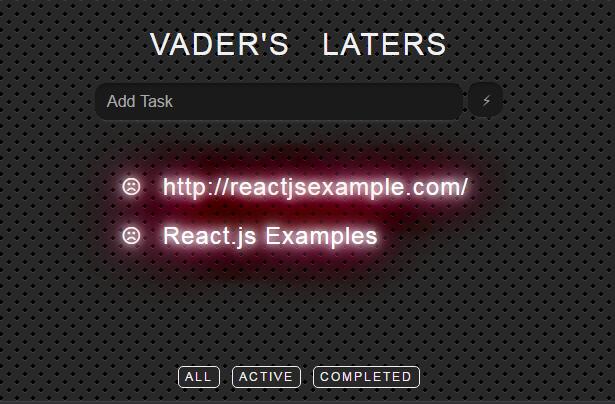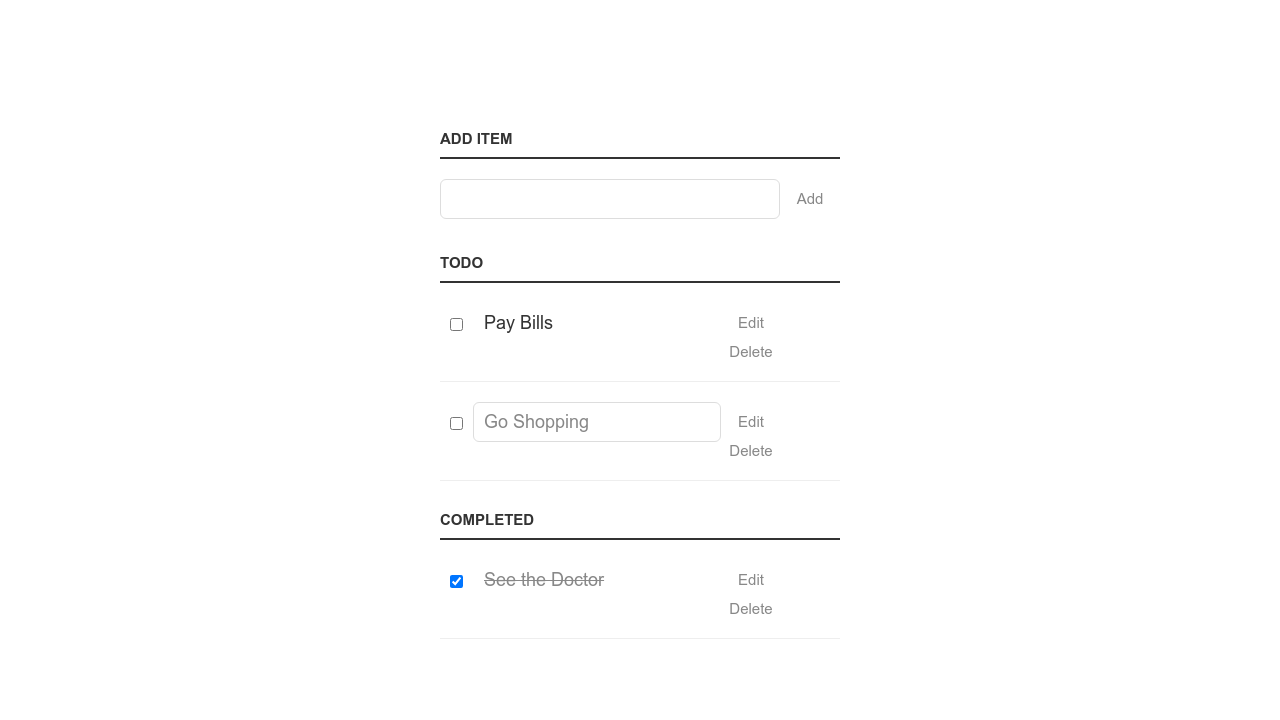

- Codepen todolist react install#
- Codepen todolist react update#
- Codepen todolist react manual#
- Codepen todolist react code#
- Codepen todolist react Offline#
This is opposed to using a class-based component, which is stateful and allows you to use React lifecycle methods like componentDidMount. Note that App is a functional component in React, which means that it is “stateless” and simply accepts data and displays it in some form. If you head back to localhost:3000, you should see your new application with the changes you've made reflected immediately thanks to hot reloading. Let's also delete all the styling within App.css to start fresh. Remove everything in between and and add in a tag with the text Hello World. This is a lot - and it's quite confusing! Let's clean it up and make it more simple. This is what your App.js file should look like: import React from "react" In your code, create-react-app also supports setting up tests ( setupTests.js) for your app, but we won't be working with them at the moment.
Codepen todolist react Offline#
Service workers allow you to create a progressive web app that can support offline experiences and work in the background. There are a few other files, such as serviceWorker.js, but they aren't within the scope of this tutorial.
Codepen todolist react code#
src: the source code of our project including React components, styles, and dynamic assets.index.html: the bundled scripts from React will be placed in the tag of this file (the root node).

public: the directory that contains our "production" code and assets that aren't compiled dynamically (images, etc.).package.json: our configuration file which contains our app's metadata and dependencies.node_modules: the directory where our external libraries and dependencies are stored.Within our directory, we have a few directories and files: If you head over to ( in your browser, you should see your first React application! Great! Now, let's cd into to-do-app and run npm start to start a development server. The following command will generate and configure all of the files, folders, and libraries we need: npx create-react-app to-do-app To bootstrap a new react project, we can use create-react-app to make our lives easier.
Codepen todolist react install#
You can install these packages for macOS, Windows, or Linux here. To get started, you'll need to make sure you have Node >= 8.10 and npm >= 5.6 on your machine. If you do that tutorial first, you'll understand the differences of React in terms of development experience and efficiency. There's also a to-do app tutorial in HTML/CSS/JS that can be found here. Feel free to do some beginner Web Development tutorials beforehand. React just makes everything easier - and you'll see what I mean very soon! Build a To-do List App Dependenciesīefore you do this tutorial, it is reccomended that you have a solid understanding of HTML, CSS, and JS.
Codepen todolist react manual#
Essentially, React.js is another layer of abstraction that removes attribute manipulation (ex: document.getElementById(), event handling (ex: element.addEventListener()), and manual DOM updating that is required if we were only using vanilla JavaScript.
Codepen todolist react update#
Therefore, you're able to tell React what state you want the user interface to be in, and it will update the "real" DOM to make sure it matches that state. It is a representation of a user interface that is kept in memory and synced (or reacts!) with the “real” DOM. React works by creating a "virtual" version of the elements on the page (also known as the virtual DOM). Not only is the development process easier (and more efficient), React is easily maintainable as everything is broken down into individual components that are extensible and easy to read. Instead of manually injecting HTML at different nodes in JavaScript (ex: by targeting an HTML element by using document.getElementById), React and other JavaScript frameworks allow us to build HTML elements using bits of state or chunks of data. It's basically the data structure of a webpage in the form of a tree.

DOM stands for Document Object Model, which is the programming interface for HTML elements on webpages. React is ideal when you are building an application that uses a lot of state (data) or involves a lot of DOM manipulation. We'll get a glimpse of the power of React.js through building a simple to-do app. With React.js, it's super easy to build and maintain complex applications. It is open-source and maintained by Facebook. React is a JavaScript library for creating user interfaces.


 0 kommentar(er)
0 kommentar(er)
